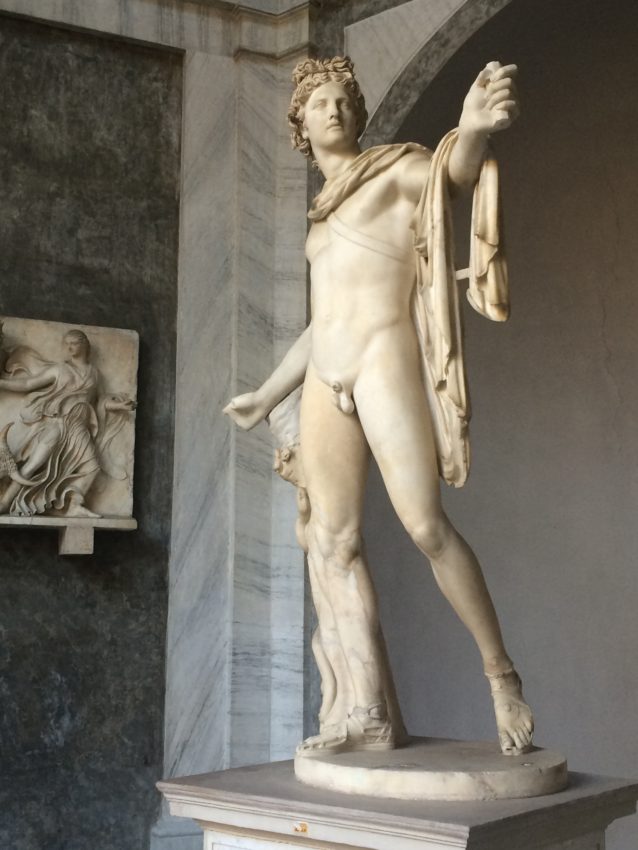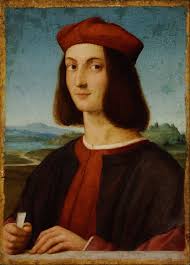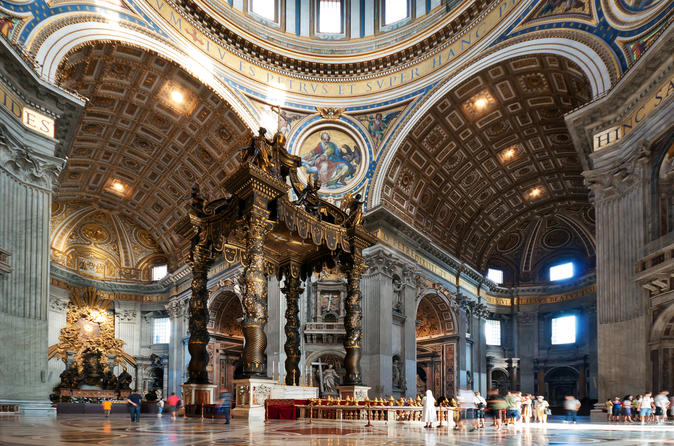Ten wild things I didn’t know about Michelangelo

When you live in Rome, you get a lot of visitors. Walking the streets of this remarkable outdoor museum that is the city, they often ask me questions only a tour guide could answer: What’s that block of marble next to the Fiat? Who is that temple named after?
I don’t mind really. As a friend from my hometown once told me, “John, if you didn’t want visitors, you should’ve moved to Milwaukee.”
But I’m not a tour guide and don’t pretend to be. Instead, I have always given one bit of advice to first-time tourists.
When you go to the Vatican Museum, go straight to the Sistine Chapel. It’s at the end of the museum and if you stop and stare at every incredible piece of art along the way, you may not be as overwhelmed as you normally would.
After tagging along Through Eternity’s Vatican tour, I will never give that advice again.
I learned something from our tour guide that day. Luca De Angelis, an archaeologist who also studied art history at the University of Rome Sapienza, took us from start to finish. I learned to see changes in art styles from one century to the next. The graduation from stiff and flat in the 14th century to the human forms of the Renaissance to the beauty of the Baroque added so much more meaning to the art I was seeing.
It made me appreciate even more the magic that is Michelangelo. The advancements he took art during the Renaissance stood out like the Sistine Chapel when compared with what came before and after him.
It’s one of the many things I learned about Michelangelo during Luca’s five-hour Vatican tour. It was part of my new part-time gig: blogging for Through Eternity, one of the top tour companies in Rome (www.througheternity.com, office@througheternity.com, 1-800-267-7581, 39-06-700-9336). He told me so many things about history’s greatest sculptor that you won’t find in guidebooks or even “The Agony and the Ecstasy,” Michelangelo’s biography I devoured in my youth.
Here are 10 things I learned that I will never forget:
1. Michelangelo sold one of his first statues in 1491 when he was 15 years old. However, it wasn’t he who sold it. He sculpted a sleeping Cupid so beautiful that a friend sold it to Cardinal Raffaele Riario, claiming it was an ancient piece of art. An art expert, Riario couldn’t tell the difference. However, Michelangelo’s friend wouldn’t share in the sale’s profits and Michelangelo ratted him out to the cardinal. Five years later, the grateful cardinal called Michelangelo to Rome and became his first patron.

2. Michelangelo even amazed himself. Before him, Donatello in the 1400s initiated realism and naturalism in sculpting but Michelangelo took it to the heavens, turning marble into near-lifelike figures. When he made his Moses, a crack appeared in the knee. Some say Michelangelo made the crack out of frustration. He made Moses so real, an obviously lonely Michelangelo grew angry and said, “TALK! DAMN YOU, TALK!”

3. Michelangelo got the Sistine Chapel gig because of a crack in the ceiling. In 1506, the Sistine Chapel was 33 years old and was beginning to deteriorate. A giant diagonal crack appeared stretching from one corner of the ceiling to the other. Pope Julius II wanted it repaired but the repaired crack was extraordinarily ugly. Combined with an already boring blue ceiling with gold stars, the pope thought about a total makeover. He commissioned Michelangelo, then 31, who was a sculptor, not a painter. He didn’t accept it until two years later. Said Luca: “He was afraid he’d screw up the whole thing.”
4. Speaking of blue, Michelangelo didn’t believe in just any blue, along with gold the most expensive color available at the time. In 1536 when he was 61 he was called to do “The Last Judgment” on the Sistine Chapel wall. He spent two years looking for the best blue on the market. Unlike when he did the ceiling, this time the church had an unlimited budget.
5. Michelangelo’s obsession with muscles wasn’t necessary due to the rumor that he was gay. Greek statues inspired him and the Greek artists often depicted their figures, gods and mortals alike, with large muscles. In turn, even Michelangelo’s women and children had bulging arms.

6. One of Michelangelo’s favorite statues in history was Apollo Belvedere. Made around 150 AD, it’s a Roman copy of an ancient Greek original, possibly bronze, from 400 years earlier. Blessed with a beautiful, confident face, “It’s the perfect example of classical Greek art,” Luca said. This contributed to the birth of the Renaissance: the rediscovery of antiquity. It’s believed Michelangelo used Apollo’s curly hair as a model for Jesus’ in “The Last Judgment.” So impressed, Michelangelo had a pupil restore the missing arms to the statue which is found in the huge courtyard outside the Belvedere Palace.

7. Michelangelo took out his revenge on one enemy in “The Last Judgment.” Cardinal Biagio da Cesena had criticized the many nudes he depicted. The cardinal said, “This is ‘The Last Judgment,’ not Roman baths.” A furious Michelangelo went to work on his version of hell in the lower right-hand corner. There, painted on the image of Minos, the judge of hell, is the unmistakable face of Cardinal Biagio.

8. Michelangelo had a bitter rivalry with Raphael. Their careers coincided. Born in 1475 in Florence, eight years before Raphael did in Urbino, Marche, Michelangelo came to Rome in 1495. Raphael came in 1508. Raphael was one of the first artists to put more life in paintings. He put red in children’s cheeks. He put saints flying on clouds. A baby looked like a baby, not, as Luca said, “like a disturbing little adult.” Michelangelo was merely the biggest star in Italy’s art world. At one point, they both lived in apartments in the Vatican. “Imagine how crazy and cool it would’ve been to hang around the Vatican back then,” Luca said, “these two incredible geniuses working in the same place, avoiding each other and were full of sarcastic comments any time they bumped into each other.”
9. Michelangelo worked on the Sistine Chapel up to 18 hours a day. He also rarely bathed.

10. Michelangelo would hate St. Peter’s today. Bernini was asked to decorate the inside of the basilica in a way to make people gasp in astonishment. It became one of the hallmarks of the Baroque style in the 1600s. “If Michelangelo could see the church as it is today he’d probably have a heart attack. Because in his mind, all these walls, all these floors, were supposed to be completely plain, only white plaster. Because in the Renaissance all the attention was on the architecture, not the decorations.”
Michelangelo is like the ghost of a mysterious, reclusive movie star still haunting the world’s most lavish home, the Vatican. Once you learn a little, you want to learn a lot. Every tour I take sheds new light on a man whose astonishing work stood out in the golden age of Italian art. His name still rings loudly around the world after 500 years. Even in a five-hour tour, there is so much more to learn about him. I would come back to hear Luca give the next chapter.
Just hanging out in the Vatican is worth the trip. For 16 months, from 2001-03, I lived two blocks from the Vatican Museum. When I walked home from Centro Storico, I had to walk through St. Peter’s Square, long after the last tourist had left. It was only me, a few security guards and the two fountains, the gushing water only adding to the romance. In the Vatican, around every corner is another story. Michelangelo is only one of them. Through Eternity tour guides know the rest.


February 28, 2017 @ 2:27 am
Great facts on such a facinating person – thanks for sharing!
February 28, 2017 @ 3:56 am
Thanks for the note, Sabrina. I often imagine how the media would have covered Michelangelo if he existed today.
March 1, 2017 @ 10:35 am
Great stuff! Thanks!!
March 1, 2017 @ 10:27 pm
Thanks, Don. Where did you get interested in art?